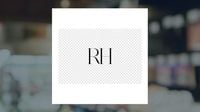On October 21, 2025, RH—the luxury home furnishings retailer formerly known as Restoration Hardware—reported solid financial results that defied a challenging economic backdrop. The company’s resilience, marked by higher revenue and improved margins, comes amid a storm of macroeconomic headwinds: a sluggish U.S. housing market, persistent inflation, new tariffs on imported goods, and a cooling labor market. Despite these hurdles, RH’s management has not only kept the business afloat but has also charted a course for future growth, pivoting production strategies and expanding its footprint both at home and abroad.
RH’s journey over recent years has been anything but smooth. According to Simply Wall St, the company’s stock soared during the early years of the pandemic, as consumers—flush with stimulus cash and spending more time at home—splurged on upscale furniture. But as the housing market weakened and inflation bit into discretionary spending, RH’s fortunes faded. The company’s stock is down approximately 57% year to date in 2025, and a staggering 76% from its 2021 peak, as reported by The Motley Fool. New tariffs, especially those introduced during President Donald Trump’s administration, have added millions in costs, while the broader economic slowdown has dampened consumer sentiment further.
Yet, in the face of these challenges, RH has delivered results that have surprised many market watchers. In its fiscal second quarter, which ended August 2, 2025, RH posted an 8.4% rise in revenue to $899.2 million, with demand—a key proxy for orders—up 13.7%. The company also achieved significant improvements in profitability: its adjusted operating margin rose by 340 basis points to 15.1%, and adjusted EBITDA margin climbed to 20.6%. These figures, highlighted by The Motley Fool, underscore the effectiveness of RH’s efforts to refresh its product selection, expand its signature sourcebooks, and open new galleries in Europe.
One of the most notable aspects of RH’s recent strategy has been its swift response to the tariff landscape. As Simply Wall St and The Motley Fool both report, RH has aggressively reduced its reliance on China for manufacturing. Sourcing from China has dropped from 16% in the first quarter of 2025 to just 2% by the fourth quarter. CEO Gary Friedman’s decision to move production away from China, and now India—which accounts for 7% of RH’s business and faces steep 50% tariffs—demonstrates a nimble approach to supply chain management. Importantly, RH now expects that 52% of its upholstered furniture will be produced domestically in the U.S. by year’s end, with significant manufacturing taking place in North Carolina. This shift not only reduces exposure to tariffs but also positions RH to better serve its core market with shorter lead times and potentially higher quality control.
Despite these operational wins, the company isn’t out of the woods yet. RH’s management revised its guidance for 2025, now anticipating 9% to 11% revenue growth despite absorbing an estimated $30 million in tariff costs. Looking further ahead, RH projects $4.3 billion in revenue and $442.6 million in earnings by 2028. Achieving this ambitious target would require 9.6% annual revenue growth and a dramatic increase in earnings from the current $84.1 million—a leap of $358.5 million. These projections, as detailed by Simply Wall St, reflect both management’s confidence and the scale of the challenge ahead.
Market participants remain divided on RH’s valuation and prospects. According to the Simply Wall St Community, fair value estimates for RH’s stock range widely, from $220.85 to $420.02 per share. This spread highlights the uncertainty facing the company: while some see significant upside, others remain wary of persistent risks, including ongoing tariff impacts and fragile consumer demand.
RH’s history offers some perspective on its ability to rebound from adversity. Back in 2016, the company’s pivot to a membership model—requiring customers to pay annual fees for access to discounts—initially floundered, and the stock plummeted by as much as 75%. However, by the following year, the membership strategy was vindicated, and RH’s stock soared to new highs. Today’s challenges, while rooted in broader macroeconomic forces, once again test RH’s capacity for reinvention and resilience.
Expansion into Europe is another pillar of RH’s growth strategy. The company’s foray into the continent has been met with early success. In its second year, RH England’s gallery saw demand surge by 76% in the second quarter of 2025, and is on track to reach nearly $50 million in demand this year. In September, RH opened a new store in Paris, which has quickly become busier than the flagship RH New York location. These results, cited by The Motley Fool, suggest that European consumers are embracing RH’s luxury aesthetic, providing a promising avenue for future growth.
Not content to rest on its laurels, RH is also branching out into new lines of business. The company has opened a handful of restaurants and guesthouses, leased a charter jet and a yacht, and launched RH Residences—a turnkey home sales venture in which RH buys, fully furnishes, and sells homes. These moves reflect management’s ambition to transform RH from a traditional retailer into a broader lifestyle brand, capturing more of the luxury consumer’s wallet and imagination.
Still, the road ahead is fraught with uncertainty. The U.S. labor market is showing signs of weakness, and consumer spending remains under pressure. Tariffs continue to pose a significant headwind, adding to the company’s cost base and complicating its global supply chain. As Simply Wall St notes, RH’s ability to offset these macroeconomic challenges with sustained revenue growth, expanding margins, and operational adaptation will be critical to its long-term investment appeal.
For investors, the key question is whether RH’s strategic pivots—toward domestic production, European expansion, and diversified lifestyle offerings—can deliver the robust growth and profitability that management envisions. Those who believe in RH’s capacity for reinvention may see today’s depressed stock price as an opportunity. Others, mindful of the risks, will watch closely to see if the company can truly turn the corner.
As RH charts its course through turbulent economic waters, one thing is clear: the company’s willingness to adapt and innovate remains undimmed. The coming years will reveal whether these efforts are enough to restore RH’s luster in the eyes of both customers and investors.






